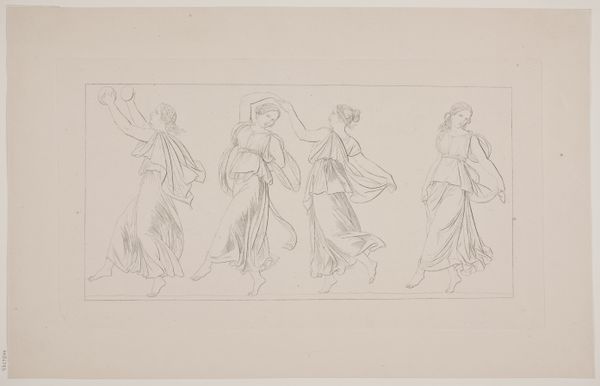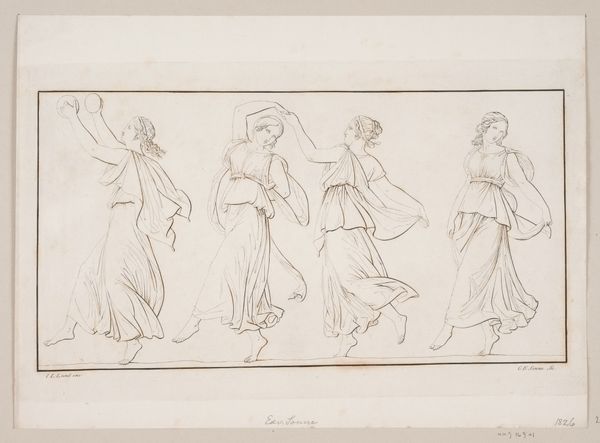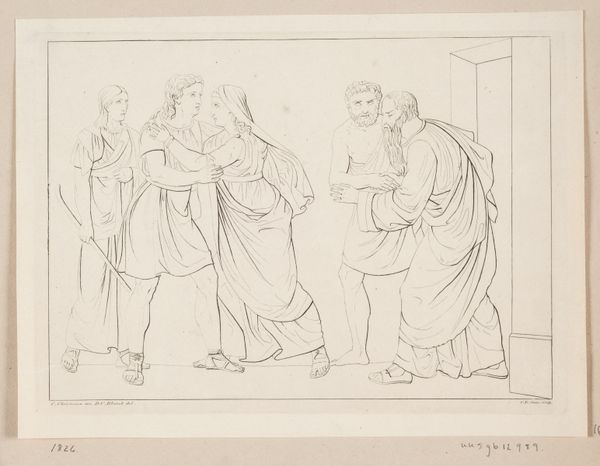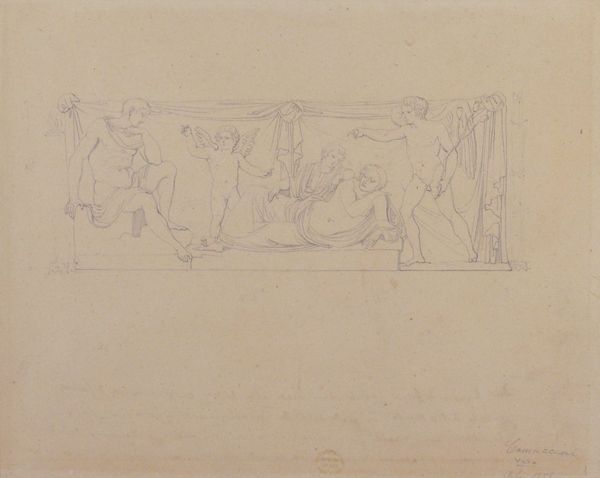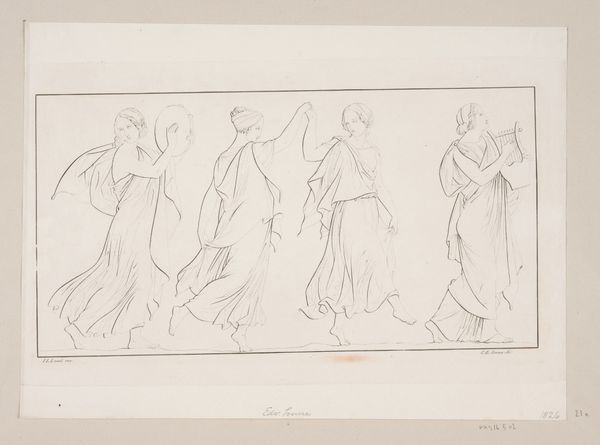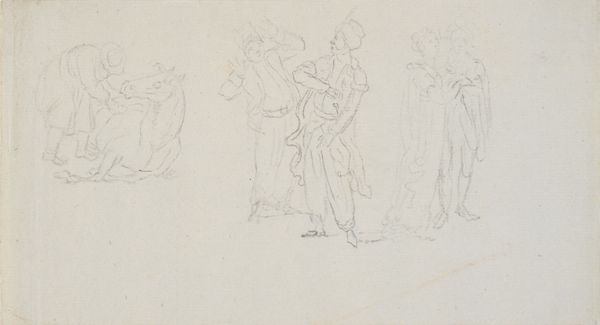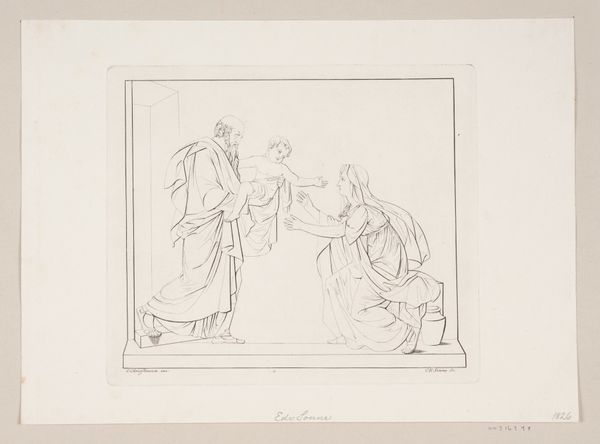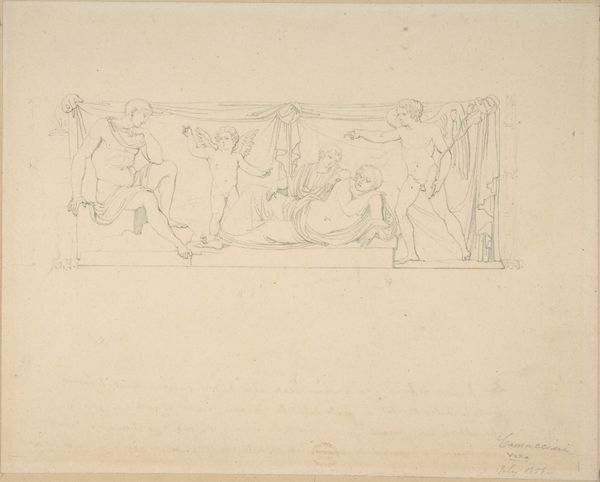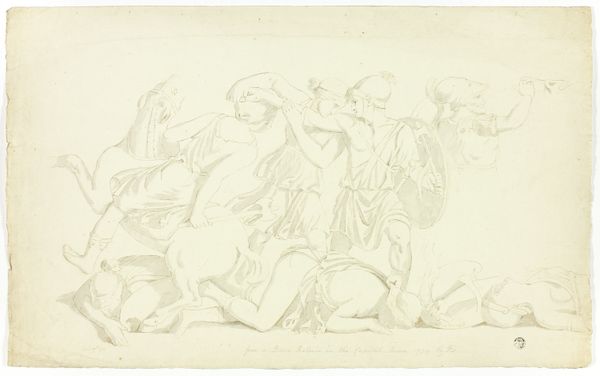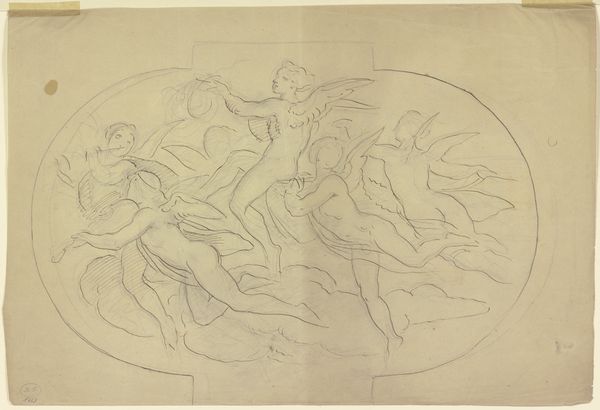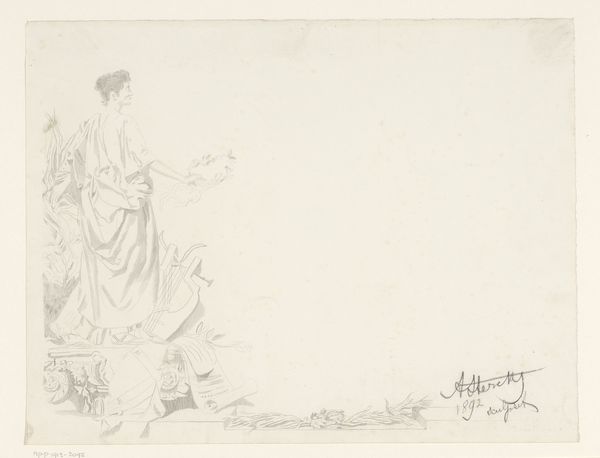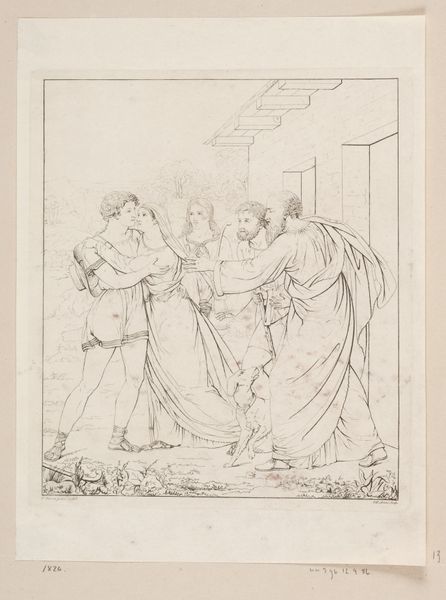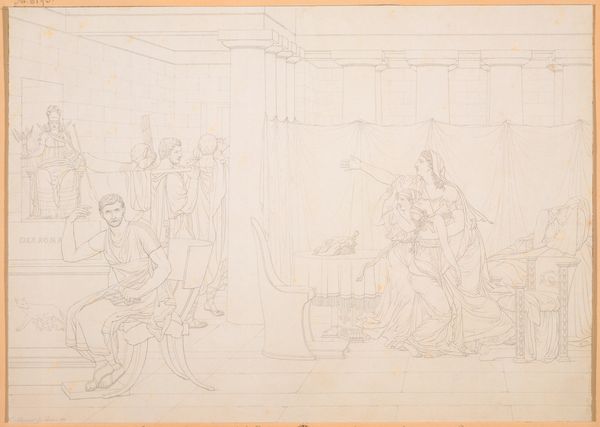
drawing, print, pencil, engraving
#
drawing
#
ink drawing
# print
#
greek-and-roman-art
#
etching
#
figuration
#
pencil
#
line
#
history-painting
#
academic-art
#
engraving
Dimensions: 212 mm (height) x 380 mm (width) (plademaal)
Curator: Immediately, I'm struck by the almost ghostly quality of this drawing, a study by J.L. Lund titled "Dancing Women in Antique Drapery". Editor: Ghostly is a great descriptor. There’s a delicacy to the lines that suggests both movement and something ephemeral, like a fleeting memory or an echo of classical forms. Curator: Right. The artist, active from 1777 to 1867, situates these figures within a Neoclassical aesthetic that was simultaneously obsessed with ancient Greece and Rome and determined to revive supposedly lost cultural ideals. These women become stand-ins for ideals of feminine grace and harmony deeply intertwined with the patriarchy of the time. Editor: Patriarchy is embedded, even celebrated, in the very composition of the image. Look at the arrangement of figures: their linear positioning mimics classical friezes, yes, but also constrains the female form. The lines, the shapes—it’s all very controlled, a stark visualization of control and order imposed upon these figures. Curator: It’s fascinating how these idealized representations often functioned as both aesthetic objects and tools for constructing societal norms around women's behavior and appearance. Think about the layers of artifice and performance built into the lives of women then, dictated by male artists, patrons and their combined vision. Editor: I agree completely. The flowing drapery is a wonderful demonstration, obscuring just as much as it reveals. There’s a tension created between what is physically present and what is implied—a dance, if you will, of seeing and understanding. Curator: Ultimately, it’s a sketch, but it's far from "just" a sketch. It embodies a whole system of historical, social and aesthetic meanings, continuing to prompt questions about representation, gender and the complex relationship between art and power. Editor: Indeed. A seemingly simple drawing opens up a wealth of interpretations. It demonstrates that art, even in its most preliminary stages, contains the capacity to hold the full weight of historical meaning.
Comments
No comments
Be the first to comment and join the conversation on the ultimate creative platform.
